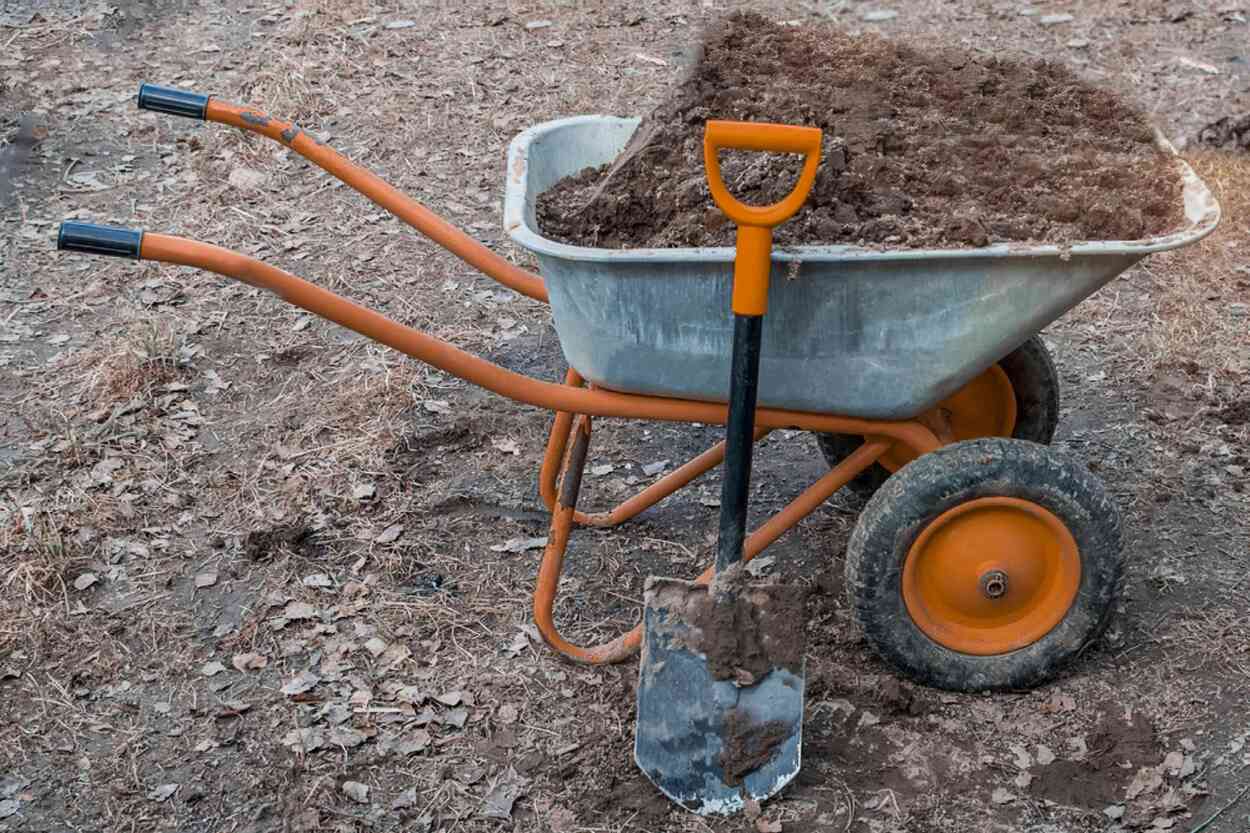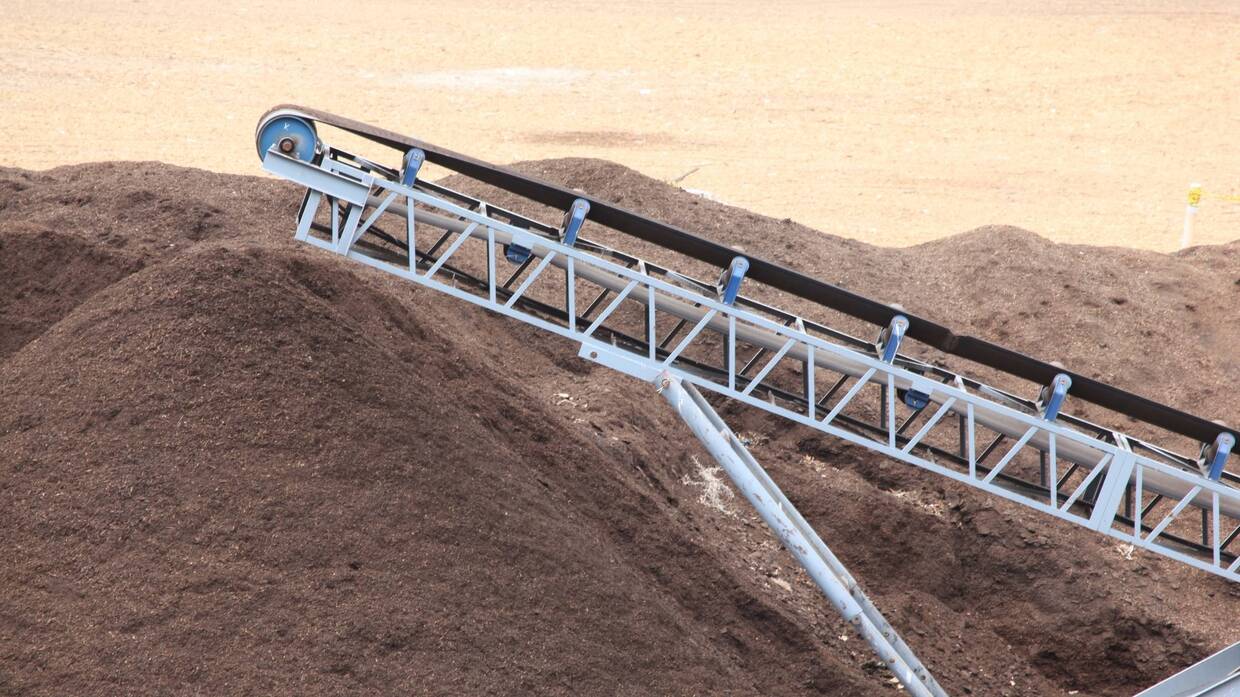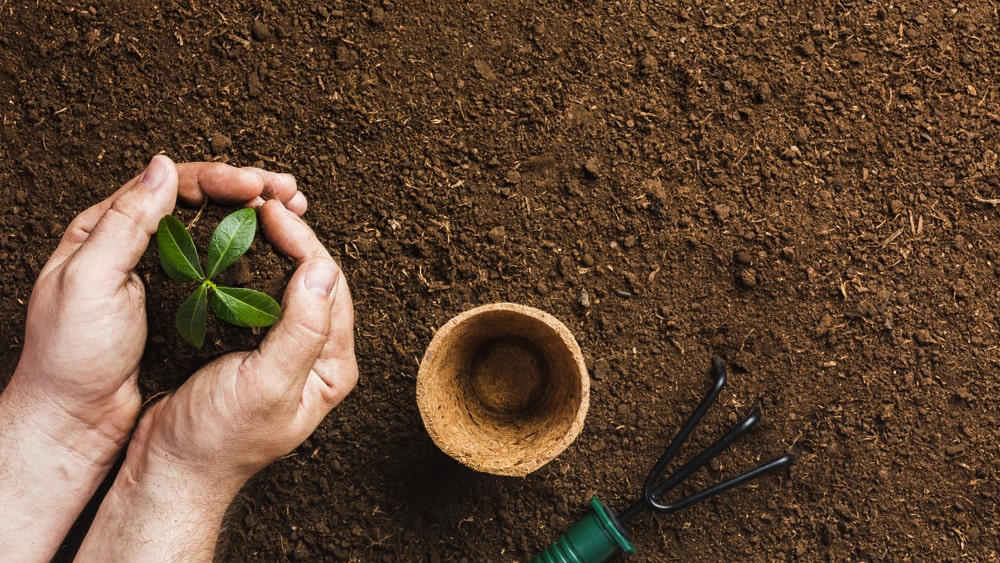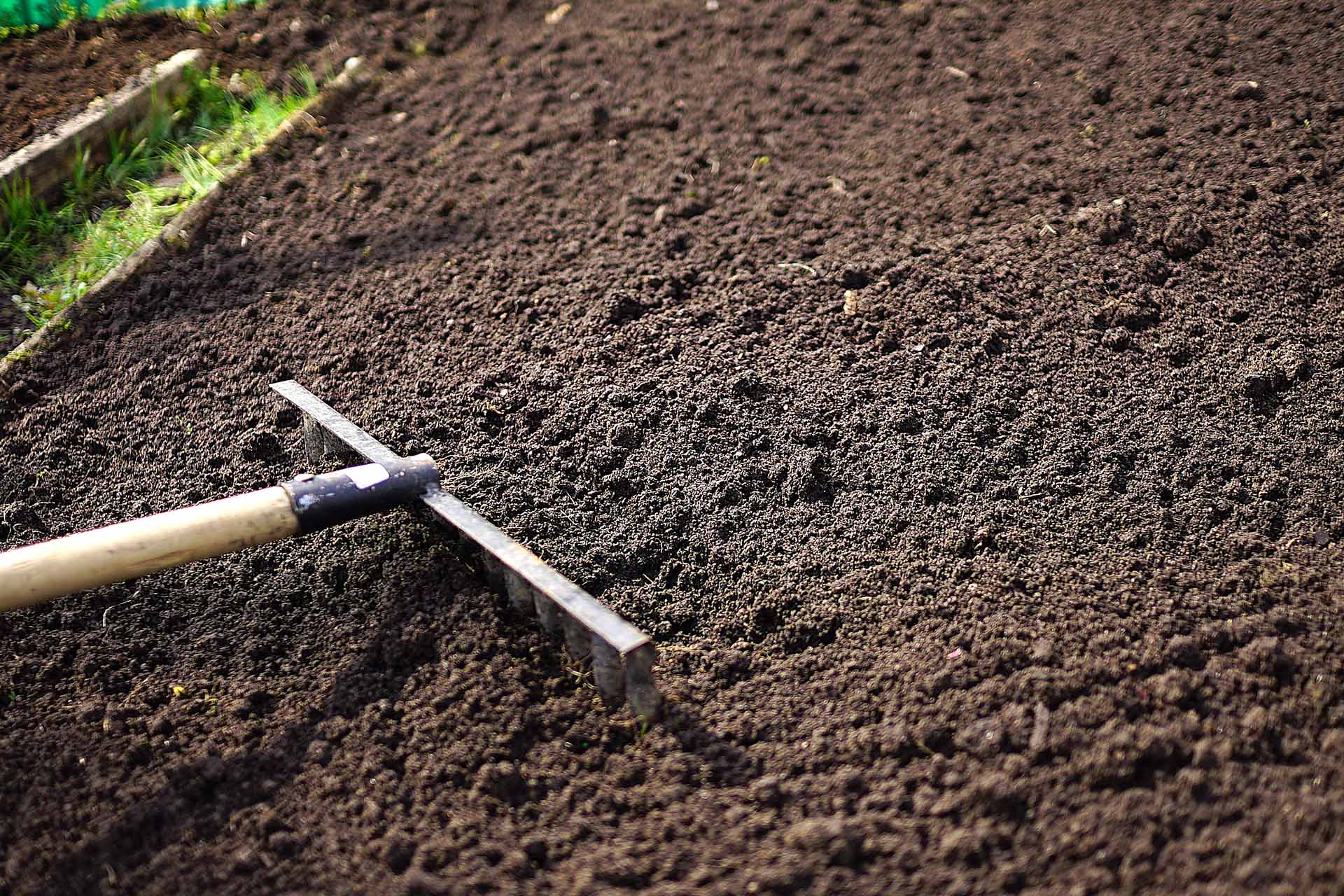Home>Gardening Basics>Understanding Soil>What Is Below Topsoil
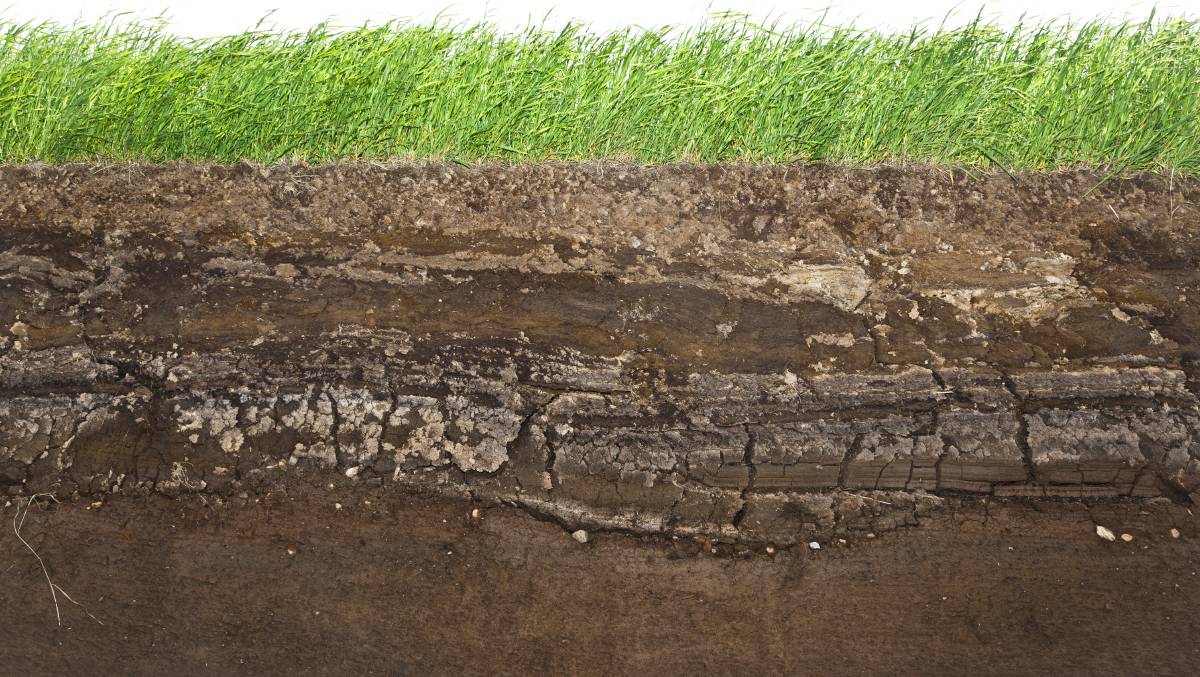

Understanding Soil
What Is Below Topsoil
Modified: February 10, 2024
Learn the importance of understanding soil and the layers beneath topsoil. Discover how different factors impact soil health and plant growth.
(Many of the links in this article redirect to a specific reviewed product. Your purchase of these products through affiliate links helps to generate commission for Chicagolandgardening.com, at no extra cost. Learn more)
Table of Contents
Introduction
Soil is often viewed as a simple mixture of dirt and minerals that plants grow in. However, beneath the surface, there is an intricate and dynamic world that plays a critical role in plant growth and ecosystem health. In particular, the layer of soil directly beneath the topsoil, known as subsoil or parent material, is often overlooked but holds essential importance.
In this article, we will explore what lies below the topsoil and delve into the fascinating world of subsoil. Understanding the composition and characteristics of this layer is key to comprehending the overall health and fertility of the soil as a whole.
By exploring the layers of soil and the relationship between subsoil and topsoil, we can gain valuable knowledge on how to optimize soil conditions for various plant species, improve soil fertility, and ensure sustainable land management practices.
So, let’s dive into the depths of the soil and unlock the secrets that lie below the surface!
Definition of Topsoil
Before we delve into what lies beneath the topsoil, let’s first understand what topsoil itself is. Topsoil is the upper layer of soil, approximately 2 to 8 inches (5 to 20 centimeters) thick, that covers the surface of the ground. It is rich in organic matter, minerals, microorganisms, and nutrients, making it an ideal layer for plant growth.
Topsoil is formed through a complex process involving the weathering of rocks and minerals over time. Organic matter, such as decomposed plants and animals, also contributes to the formation of topsoil. This layer is full of nutrients that plants need to grow, including nitrogen, phosphorus, and potassium. It also acts as a reservoir for water and provides a habitat for beneficial soil organisms like earthworms, bacteria, and fungi.
One of the defining characteristics of topsoil is its dark color, which indicates the presence of organic matter. This dark, rich color is a result of the decomposition of plant material, which adds nutrients to the soil and improves its fertility. Additionally, topsoil is typically loose and crumbly in texture, allowing plant roots to penetrate easily and access the nutrients within.
Topsoil is crucial for sustaining plant life and supporting healthy ecosystems. It serves as a medium for root growth, provides essential nutrients for plants, and acts as a sponge, holding water and releasing it slowly to prevent soil erosion and water runoff.
Now that we have a clear understanding of what topsoil is, let’s explore what lies beneath this layer and how it contributes to the overall health of the soil.
Layers of Soil
Soil is a complex and layered system, consisting of various horizons or layers. Each layer has distinct characteristics and plays a unique role in supporting plant growth. Understanding these layers is essential for soil management and optimizing agricultural practices.
The top layer of soil, as mentioned earlier, is called the topsoil. Below the topsoil lies a series of layers known as the subsoil. The subsoil typically consists of two horizons, referred to as the B horizon and the C horizon.
The B horizon, also known as the subsoil, is located just below the topsoil and is often richer in minerals like clay and iron. It is less fertile than the topsoil but still crucial for plant growth. The subsoil retains water and nutrients that percolate down from the topsoil, ensuring their availability to plants during dry periods.
The C horizon, also called the parent material, is the layer that lies beneath the subsoil. It consists of partially weathered rocks and minerals. The parent material is the raw material from which the rest of the soil is formed. It directly influences the composition and characteristics of the soil above it. The type of parent material determines factors such as soil pH, nutrient availability, and drainage.
Beneath the parent material, we may encounter the R horizon, composed of bedrock. This layer serves as the solid foundation of the soil profile and is a deeper layer that is less affected by weathering processes.
These various layers of soil interact and influence each other, creating a dynamic environment that supports plant growth. The combination of topsoil, subsoil, and parent material determines the overall fertility, structure, and composition of the soil.
Now that we understand the different layers of soil, let’s explore the subsoil and its relationship to the topsoil in more detail.
Subsoil
The subsoil is the layer of soil that lies directly beneath the topsoil and plays a crucial role in supporting plant growth. It is often referred to as the B horizon, as it is the second layer in the soil profile. While the topsoil is rich in organic matter and nutrients, the subsoil has its own distinct characteristics.
One of the primary features of the subsoil is its composition, which differs from that of the topsoil. The subsoil is typically made up of a higher percentage of mineral particles, such as clay and silt, compared to the organic matter-rich topsoil. These mineral particles have a closer arrangement, making the subsoil denser and less porous than the topsoil.
Due to its compact nature, the subsoil has different water retention properties compared to the topsoil. While the topsoil readily absorbs and retains water, the subsoil has a lower water-holding capacity, resulting in decreased availability of water for plant roots. However, the subsoil acts as a reservoir, holding water from rainfall or irrigation and slowly releasing it to the topsoil and plants during dry periods.
In terms of nutrient availability, the subsoil tends to have fewer nutrients compared to the topsoil. The organic matter and nutrients that are leached from the topsoil by water percolation gradually accumulate in the subsoil. This nutrient redistribution can provide long-term benefits to plants, as the roots can access these nutrients during periods of low nutrient availability in the topsoil.
Moreover, the subsoil plays a role in stabilizing plants by providing a firm foundation for root growth. The denser structure of the subsoil helps anchor plants securely into the ground, providing stability and support. Additionally, the subsoil serves as a pathway for plant roots to explore deeper soil layers, accessing water and nutrients that may be less available in the topsoil.
Understanding the properties and characteristics of the subsoil is vital for effective soil management. It allows farmers and gardeners to implement strategies to optimize water and nutrient availability, enhance root development, and promote healthy plant growth.
Next, let’s explore the relationship between the subsoil and the parent material, which is the layer beneath it.
Parent Material
The parent material is the layer of soil that lies beneath the subsoil and serves as the foundation for the soil profile. It is often referred to as the C horizon and plays a significant role in determining the characteristics and composition of the soil.
The parent material consists of partially weathered rocks and minerals. Over time, geological processes like erosion, weathering, and deposition break down rocks into smaller particles, forming the parent material. The type of parent material present in an area directly influences soil properties such as texture, drainage, and nutrient availability.
There are different types of parent materials, each having unique characteristics. For instance, the parent material can be composed of granite, limestone, sandstone, or volcanic ash, among others. These variations in composition directly affect the soil’s fertility and nutrient content.
The parent material also determines the soil’s pH level, as certain types of rocks and minerals can influence soil acidity or alkalinity. For example, limestone parent material tends to increase soil pH, resulting in alkaline conditions, while granite parent material can contribute to a more acidic soil pH.
Another important aspect influenced by the parent material is soil drainage. Different types of parent material have varying porosity and permeability, affecting how well water moves through the soil. For instance, sandy parent material allows for good drainage, while clay-rich parent material can result in poor drainage and compaction.
Furthermore, the parent material helps determine the mineral composition of the soil. As rocks weather and break down, they release minerals that can enrich the soil with essential nutrients. These minerals contribute to the overall fertility of the soil, supporting plant growth and development.
It is important to note that while the parent material has a significant impact on soil composition, it is not the sole factor. Over time, biological processes, climate conditions, and human activities also influence the soil’s development. These factors collectively contribute to the richness and complexity of the soil profile.
Understanding the parent material of a specific area is crucial for determining soil management strategies, selecting suitable crops, and enhancing soil fertility. By analyzing the parent material, farmers and gardeners can make informed decisions and implement practices that optimize the soil’s potential for optimal plant growth.
Now that we have explored the importance of the parent material, let’s delve deeper into the rocks and minerals that make up the soil.
Rocks and Minerals
Within the parent material, rocks and minerals play a vital role in shaping the composition and characteristics of the soil. Rocks are solid, naturally occurring materials that are made up of various minerals. When rocks undergo weathering processes, they break down into smaller pieces, exposing minerals that contribute to soil formation.
There are three main types of rocks: igneous, sedimentary, and metamorphic.
Igneous rocks form from the cooling and solidification of molten lava or magma. Examples of igneous rocks include granite, basalt, and obsidian. Igneous rocks often contain a wide range of minerals, such as quartz, feldspar, and mica, which contribute to the mineral composition of the soil.
Sedimentary rocks are formed by the accumulation and compression of sediments over time. They can be further categorized into three types: clastic, chemical, and organic. Clastic sedimentary rocks, like sandstone and shale, are formed from the accumulation of particles and debris. Chemical sedimentary rocks, such as limestone and gypsum, form from the precipitation and accumulation of dissolved minerals. Organic sedimentary rocks, like coal and limestone, are formed from the remains of plants and animals. These sedimentary rocks bring a range of minerals and organic matter into the soil profile.
Metamorphic rocks are formed when existing rocks undergo intense heat and pressure, causing them to transform. Examples of metamorphic rocks include marble, slate, and gneiss. Metamorphic rocks can contain a variety of minerals based on the original rocks they have transformed from.
Minerals, on the other hand, are naturally occurring inorganic substances with specific chemical compositions and crystal structures. Some common minerals found in soil include quartz, feldspar, clay minerals, and calcite. These minerals contribute to the soil’s physical properties, such as texture, structure, and water-holding capacity.
The rocks and minerals present in the parent material directly influence the fertility of the soil. As rocks break down through weathering processes, minerals are released into the soil, enriching it with various nutrients. For example, granite contains minerals like potassium and phosphorus, which are crucial for plant growth.
Furthermore, different minerals have different water-holding capacities and interactions with organic matter. Clay minerals, for instance, have a high water-holding capacity, while sand particles allow for better drainage. These variations in mineral composition contribute to soil structure and affect its ability to retain water and nutrients.
Understanding the rocks and minerals present in the soil provides valuable insights into soil fertility, nutrient availability, and overall soil health. By analyzing the soil’s mineral composition, farmers and gardeners can make informed decisions about amending the soil with specific nutrients or adjusting irrigation practices accordingly.
Now that we have explored the importance of rocks and minerals in soil formation, let’s examine how weathering processes contribute to the creation of these essential components.
Weathering
Weathering is a fundamental process that contributes to the formation and alteration of rocks and minerals, playing a crucial role in soil development. It refers to the physical and chemical breakdown of rocks and minerals due to exposure to atmospheric, biological, and geological factors.
There are three main types of weathering: physical, chemical, and biological.
Physical weathering, also known as mechanical weathering, involves the physical breakdown of rocks into smaller fragments without changing their chemical composition. It occurs due to factors such as temperature fluctuations, freeze-thaw cycles, wind erosion, and abrasion. Physical weathering processes break rocks into smaller pieces, increasing the surface area available for further weathering and facilitating the release of minerals into the soil.
Chemical weathering, on the other hand, involves the alteration of rocks and minerals through chemical reactions. This process occurs when rocks interact with atmospheric agents, such as water, oxygen, and acids. Chemical reactions, like oxidation and hydrolysis, break down the minerals present in rocks, transforming them into new substances. For example, the weathering of granite results in the release of nutrients like potassium and phosphorous into the soil, essential for plant growth.
Biological weathering occurs due to the actions of living organisms, such as plants, animals, and microorganisms. Plant roots can penetrate rocks, exerting pressure and causing them to crack. Burrowing animals, like earthworms, contribute to the breakdown of rocks by churning the soil and increasing exposure to weathering agents. Microorganisms produce organic acids that can dissolve minerals, further contributing to the weathering process.
Weathering not only breaks down rocks and minerals, but it also contributes to the formation of soil. As rocks weather and break apart, the resulting particles mix with organic matter, nutrients, and microorganisms, creating the fertile layer known as topsoil. The weathering process enriches the soil with minerals released from rocks, making them available for plant uptake.
The rate and intensity of weathering depend on factors such as the type of rock, climate conditions, vegetation cover, and time. In areas with high rainfall and warm temperatures, weathering processes can occur at a faster rate compared to dry and cold regions. Vegetation can also influence weathering, as plant roots can physically break apart rocks and release organic acids that facilitate chemical weathering.
Understanding weathering processes is vital for soil management and agricultural practices. By recognizing the types of weathering occurring in a specific area, farmers and gardeners can adjust their cultivation techniques, amend soil composition, and improve nutrient availability to optimize plant growth.
Now that we have explored the weathering processes contributing to soil formation, let’s examine the relationship between weathering and the topsoil, which plays a crucial role in supporting plant life.
Relationship to Topsoil
The subsoil, parent material, rocks, minerals, and weathering processes all contribute to the formation and development of topsoil. Understanding the relationship between these layers and processes is crucial for managing soil fertility and promoting healthy plant growth.
The subsoil, located just beneath the topsoil, plays a supporting role by retaining water and nutrients that percolate down from the surface. It acts as a reservoir, ensuring a steady supply of essential resources to plants during dry periods. While the subsoil may have a lower nutrient content compared to the topsoil, its role in water retention and nutrient redistribution is vital for sustaining plant growth and overall soil health.
The parent material and underlying rocks and minerals directly influence topsoil characteristics. The composition of the parent material determines factors such as soil pH, nutrient availability, and drainage. For example, soils developed from limestone parent material tend to be more alkaline, while soils formed from granite parent material may be more acidic. The minerals present in the parent material contribute to the mineral composition of the topsoil, providing essential nutrients for plants.
Weathering processes further contribute to the development of topsoil by breaking down rocks and minerals. Physical and chemical weathering processes create smaller particles that mix with organic matter, creating the fertile layer of topsoil that supports plant growth. Weathering releases essential nutrients into the soil, enriching the topsoil with minerals necessary for plant uptake.
The relationship between the subsoil, parent material, rocks, minerals, weathering, and topsoil is intricate and interconnected. These layers and processes work together to create a dynamic soil profile that supports healthy plant growth and sustains ecosystems.
Managing and optimizing the topsoil requires an understanding of the underlying layers and their contributions. By analyzing the soil composition, farmers and gardeners can implement strategies to improve soil fertility, adjust pH levels, amend nutrient deficiencies, and enhance water-holding capacity. This knowledge enables the cultivation of a diverse range of plants, supports sustainable agriculture practices, and ensures the long-term health of the soil.
In the next section, we will explore the composition and characteristics of the topsoil, which is the layer directly responsible for supporting plant growth.
Composition and Characteristics
The composition and characteristics of topsoil are critical factors in determining its ability to support plant growth and sustain healthy ecosystems. Understanding the components that make up the topsoil is vital for effective soil management and agriculture practices.
Topsoil is composed of a combination of mineral particles, organic matter, water, air, microorganisms, and various nutrients. The relative proportion of these components varies depending on factors such as climate, vegetation cover, and human activities.
Mineral particles, such as sand, silt, and clay, constitute the mineral fraction of topsoil. These particles determine the soil’s texture, which affects its water-holding capacity, drainage, and nutrient-retention ability. Sandy soils have larger particles, allowing for better drainage but reduced water and nutrient retention. Clay soils, on the other hand, have smaller particles, resulting in higher water-holding capacity but slower drainage. A balanced combination of different particle sizes, known as loam soil, provides optimal soil structure and promotes healthy root growth.
Organic matter is a crucial component of topsoil, consisting of decomposed plant and animal materials. It contributes to the soil’s fertility and structure. Organic matter provides essential nutrients for plants, improves water-holding capacity, promotes soil aggregation, and enhances the biological activity of microorganisms. Additionally, organic matter aids in moisture retention, preventing excessive water loss from the soil surface.
The presence of water and air is another essential characteristic of topsoil. These components ensure the proper exchange of gases, provide oxygen to plant roots, and facilitate the movement of nutrients within the soil. Adequate water and air balance is critical for root respiration, nutrient uptake, and overall plant health.
Microorganisms, such as bacteria, fungi, and earthworms, are an integral part of topsoil. They play a crucial role in nutrient cycling, organic matter decomposition, and the formation of soil structure. Microorganisms break down organic materials, releasing nutrients that are then made available for plants. They also contribute to the soil’s resilience against diseases and pests.
The nutrient content in topsoil is essential for supporting plant growth. Macro-nutrients like nitrogen, phosphorus, and potassium are necessary for plant development, while micronutrients such as iron, zinc, and copper are required in smaller quantities. The availability of these nutrients in the topsoil determines the soil’s fertility and the ability of plants to uptake essential elements for their growth.
Overall, the composition and characteristics of topsoil are fundamental in determining its fertility, water-holding capacity, nutrient availability, and microbial activity. Understanding and managing these factors enable farmers and gardeners to optimize soil conditions, enhance plant health, and promote sustainable land management practices.
In the next section, we will explore the significance and importance of topsoil in supporting plant growth and maintaining healthy ecosystems.
Nutrient Availability
Nutrient availability is a critical factor in determining the fertility and productivity of topsoil. The presence and accessibility of essential nutrients directly influence plant growth, development, and overall health. Understanding the factors that affect nutrient availability in the topsoil is crucial for effective soil management and agricultural practices.
The nutrient content in topsoil is influenced by various factors, including the parent material, weathering processes, organic matter decomposition, and human activities such as fertilizer application and crop rotation.
One primary factor influencing nutrient availability is the breakdown of organic matter. Organic matter decomposition releases nutrients, making them available for plant uptake. As microorganisms break down organic materials, they release nutrients such as nitrogen, phosphorus, potassium, and trace elements into the soil. This process replenishes the soil’s nutrient content, ensuring a continuous supply of essential elements for plant growth.
The parent material and weathering processes also contribute to nutrient availability in the topsoil. As rocks and minerals weather over time, they release nutrients into the soil. For example, the weathering of rocks rich in potassium can lead to an increase in soil potassium levels. The parent material’s mineral composition can influence the types and amounts of nutrients present in the topsoil, impacting plant nutrient uptake.
Human activities, such as fertilizer application, significantly impact nutrient availability. Fertilizers provide a concentrated source of essential elements, supplementing the natural nutrient content of the topsoil. However, improper or excessive fertilizer use can lead to nutrient imbalances or environmental pollution. A balanced approach to fertilizer application is crucial to ensure optimal nutrient availability while minimizing negative environmental impacts.
Soil pH also plays a crucial role in nutrient availability. Some nutrients are more readily available to plants in acidic soils, while others are more available in alkaline conditions. Adjusting soil pH through proper soil amendments can help optimize nutrient availability and uptake for specific plant requirements.
In addition to nutrient availability, the presence of soil microorganisms is essential for nutrient cycling and plant access to nutrients. Microorganisms, such as bacteria and fungi, help break down organic matter, release nutrients, and enhance nutrient availability for plant roots. Maintaining a healthy microbial population through organic matter additions and avoiding the overuse of chemical fertilizers promotes a balanced nutrient cycling system in the topsoil.
By understanding the factors that influence nutrient availability, farmers and gardeners can implement strategies to optimize topsoil fertility. Regular soil testing, proper fertilization practices, organic matter additions, and maintaining a healthy soil microorganism population are key methods for enhancing nutrient availability and promoting healthy plant growth.
In the next section, we will explore the importance of water retention in topsoil and its impact on plant growth and soil health.
Water Retention
Water retention is a crucial characteristic of topsoil that directly impacts plant growth, soil health, and ecosystem resilience. The ability of soil to retain water determines its capacity to provide plants with a continuous supply of moisture, even during periods of limited rainfall or drought. Understanding the factors that influence water retention in topsoil is essential for effective soil management and sustainable agriculture practices.
The soil’s water retention capacity is primarily influenced by its texture, organic matter content, and structure. Soil texture refers to the relative proportions of sand, silt, and clay particles. Sandy soils, with larger particle sizes, tend to have lower water retention capacity but offer better drainage. In contrast, clay-rich soils with smaller particle sizes have higher water retention but may have impaired drainage. A well-balanced, loamy soil texture can provide optimal water-holding capacity and drainage.
The organic matter content in topsoil plays a vital role in water retention. Organic matter acts as a sponge, holding onto water and releasing it gradually to plant roots. It improves soil structure, allowing for better water infiltration and reducing the risk of runoff. Soils with higher organic matter content have increased water-holding capacity, decreasing the frequency and severity of drought stress for plants.
The soil’s structure also influences water retention. A well-aggregated soil with good pore space allows for improved water movement and storage. Well-structured soils have a balance between micropores, which hold plant-available water, and macropores, which facilitate water infiltration and drainage. Soil compaction, on the other hand, reduces pore space and disrupts the soil’s ability to retain water.
Vegetation cover, such as plant roots and surface residues, also contributes to water retention in topsoil. Plant roots create channels for water movement, allowing it to penetrate deeper into the soil profile. Surface residues, such as fallen leaves or crop residues, act as a natural mulch, reducing evaporation and helping to maintain soil moisture levels.
In regions with limited rainfall or where water resources are scarce, maximizing water retention in the topsoil is crucial for sustaining plant growth and agricultural productivity. Implementing water conservation techniques, such as mulching, drip irrigation, and contour plowing, can help reduce water loss and optimize water availability for plants.
Proper soil management practices, like organic matter additions, minimizing soil compaction, and promoting healthy soil structure, are vital for enhancing water retention capacity. These practices improve the soil’s ability to hold onto moisture, reducing water stress on plants and increasing their resilience to drought conditions.
Considering the importance of water for plant growth and overall ecosystem health, optimizing water retention in topsoil is essential for promoting sustainable agriculture and land management practices.
In the next section, we will explore the role of topsoil in supporting root growth, anchoring plants, and providing a suitable environment for healthy plant development.
Root Growth
Root growth is a critical process in plant development, and the topsoil provides the ideal environment for healthy root growth. The composition and characteristics of topsoil directly influence root development, anchoring plants securely, and providing essential nutrients and water for plant uptake. Understanding the factors that impact root growth in the topsoil is crucial for optimizing plant health and maximizing agricultural productivity.
The physical structure of the topsoil is a key factor in supporting root growth. Loose, well-aerated topsoil allows roots to penetrate easily and explore the growing medium. The presence of air-filled pores within the soil ensures oxygen availability for root respiration. Adequate oxygen levels are crucial for maintaining healthy root metabolic processes and facilitating nutrient uptake.
The topsoil’s texture and aggregation also play a role in root growth. A balanced soil texture, with an appropriate ratio of sand, silt, and clay particles, allows for optimal root penetration and anchorage. Well-structured topsoil with good aggregation creates space for root development and creates channels for water and nutrient movement.
The presence of organic matter in the topsoil is essential for root growth. Organic matter acts as a nutrient reservoir, releasing essential elements for plant uptake as needed. It improves soil structure, allowing roots to penetrate more easily and promoting the development of a healthy root system. Additionally, organic matter enhances water retention in the topsoil, ensuring a steady supply of moisture for root uptake.
The availability of nutrients in the topsoil is crucial for root growth and development. Essential elements such as nitrogen, phosphorus, potassium, and micronutrients support various aspects of root growth, including cell division, elongation, and branching. Without an adequate supply of nutrients, root growth can be stunted or inhibited, leading to decreased plant vigor and productivity.
Water availability is another critical factor for root growth. The topsoil plays a crucial role in retaining and providing water to plant roots. Roots absorb water through osmosis, and a moist topsoil allows for efficient water uptake. The proper balance of water, with sufficient moisture but also good drainage, ensures ideal conditions for root growth.
The topsoil also acts as a reservoir for beneficial microorganisms that support root growth. These microorganisms form symbiotic relationships with plants, aiding in nutrient acquisition and providing protection against pathogens. By creating a favorable soil environment for microorganisms, the topsoil contributes to root health and disease resistance.
Optimizing root growth in the topsoil is crucial for maximizing plant health, yield, and environmental sustainability. Proper soil management practices, such as maintaining soil structure, incorporating organic matter, providing sufficient nutrients, and optimizing moisture levels, ensure an ideal environment for root development. By focusing on root growth, farmers and gardeners can promote healthy plant growth, improve nutrient uptake efficiency, and enhance overall agricultural productivity.
In the next section, we will explore the broader significance and importance of topsoil in maintaining ecosystem health and sustainability.
Importance of Topsoil
Topsoil is a critical component of the Earth’s ecosystem and plays a fundamental role in supporting plant growth, sustaining biodiversity, and maintaining overall ecosystem health. The importance of topsoil extends beyond agriculture and gardening, impacting various aspects of human life and the environment.
One of the primary functions of topsoil is its ability to support plant growth. It serves as a reservoir for essential nutrients, water, and air, providing a hospitable environment for roots to penetrate, anchor, and extract nutrients needed for plant development. Healthy topsoil ensures optimal plant growth, leading to increased agricultural productivity, improved food security, and enhanced ecosystem stability.
Topsoil is a hub of biological activity, teeming with microorganisms, earthworms, insects, and other beneficial organisms. These organisms play vital roles in nutrient cycling, organic matter decomposition, and soil structure improvement. The interactions between these organisms and the topsoil contribute to the overall health and fertility of the soil, enhancing its ability to support plant and animal life.
The topsoil also acts as a natural filter and purifier. It helps prevent water pollution by absorbing and filtering pollutants, sediment, and excess nutrients that could otherwise enter groundwater and surface water systems. Topsoil acts as a shield, protecting underlying layers from contamination and contributing to clean water sources for human consumption and aquatic ecosystems.
Topsoil plays a critical role in soil erosion prevention. Its composition, structure, and vegetation cover help retain and slow down water runoff, reducing the risk of soil erosion and the loss of valuable topsoil. The presence of organic matter in the topsoil enhances its ability to hold onto water, preventing excessive runoff and promoting moisture infiltration, which further reduces erosion risks.
The preservation of topsoil is crucial for mitigating climate change. It acts as a carbon sink, storing vast amounts of carbon dioxide and other greenhouse gases. Maintaining healthy topsoil and implementing sustainable land management practices can enhance carbon sequestration, helping to reduce the impacts of climate change and contribute to global efforts for carbon neutrality.
Finally, topsoil contributes to the aesthetic beauty of landscapes, provides habitats for diverse organisms, supports recreational activities, and promotes overall well-being and quality of life for communities living in harmony with the environment.
Given the vital functions it performs, preserving and enhancing the quality of topsoil is of utmost importance. Implementing sustainable land management practices, such as soil conservation techniques, organic matter additions, crop rotation, and responsible use of fertilizers, helps protect and improve the health of topsoil. By valuing and investing in topsoil conservation, we can ensure its longevity, productivity, and the sustainability of our ecosystems for future generations.
The significance of topsoil cannot be overstated. It is a precious resource that underpins the foundation of life on our planet and warrants our careful attention and preservation.
Conclusion
Understanding the intricacies of topsoil is vital for sustainable land management, agriculture practices, and ecosystem health. The layers of soil, including subsoil and parent material, the breakdown of rocks and minerals through weathering processes, and the composition and characteristics of topsoil all contribute to the overall health and fertility of the soil.
Topsoil, with its rich organic matter, nutrients, and water retention capacity, serves as a vital medium for root growth, nutrient availability, and plant development. It provides the necessary support for plants to anchor themselves, access vital nutrients and water, and thrive in their environments.
The importance of topsoil extends beyond agriculture, impacting water quality, carbon sequestration, erosion prevention, and biodiversity. It acts as a natural filter, purifying water and reducing pollution risks. It plays a vital role in climate regulation, storing carbon and mitigating climate change impacts. Additionally, topsoil helps prevent soil erosion, protecting valuable soil resources and maintaining ecosystem integrity.
Preserving topsoil through sustainable soil management practices is crucial for maintaining its fertility and productivity. Prioritizing techniques such as organic matter additions, erosion control, responsible water management, and judicious use of fertilizers ensures the long-term health and sustainability of the soil.
As stewards of the land, we have a responsibility to protect and enhance our topsoil. By valuing the significance of this intricate layer and implementing sustainable practices, we can support healthy plant growth, biodiversity, and ecosystem resilience.
Let us recognize and appreciate the vital role of topsoil in our lives and make conscious efforts to preserve and improve it for the benefit of current and future generations.

